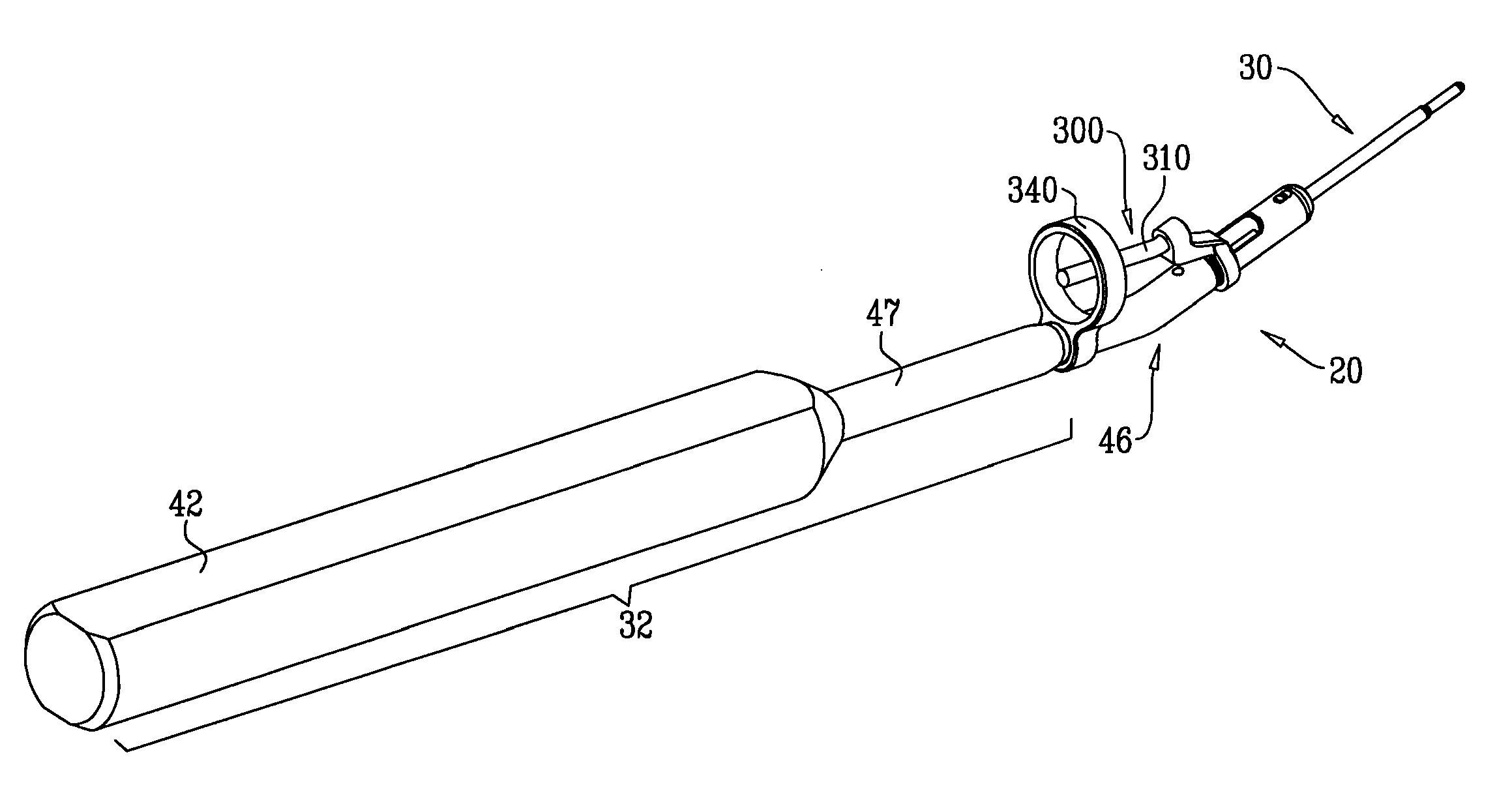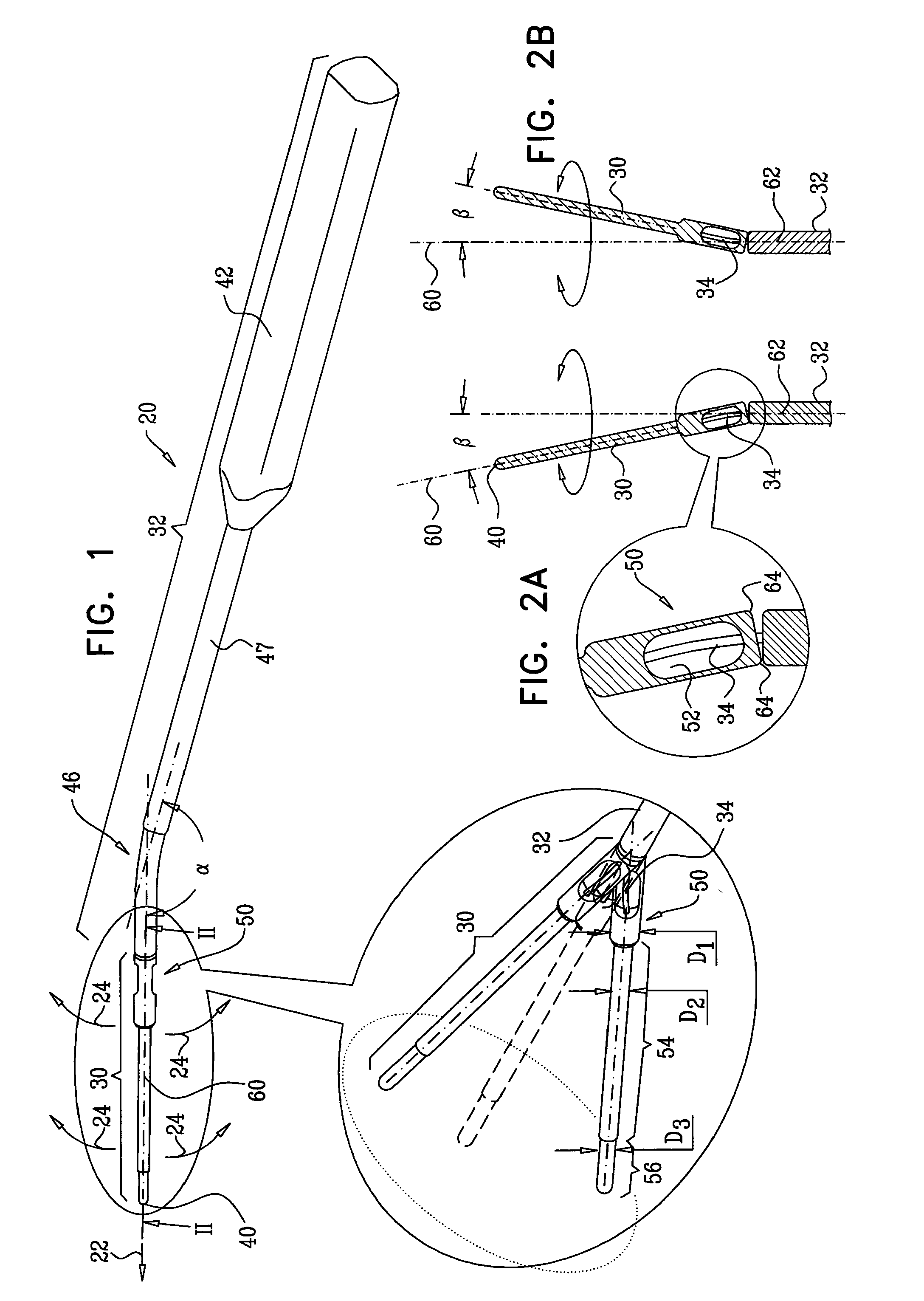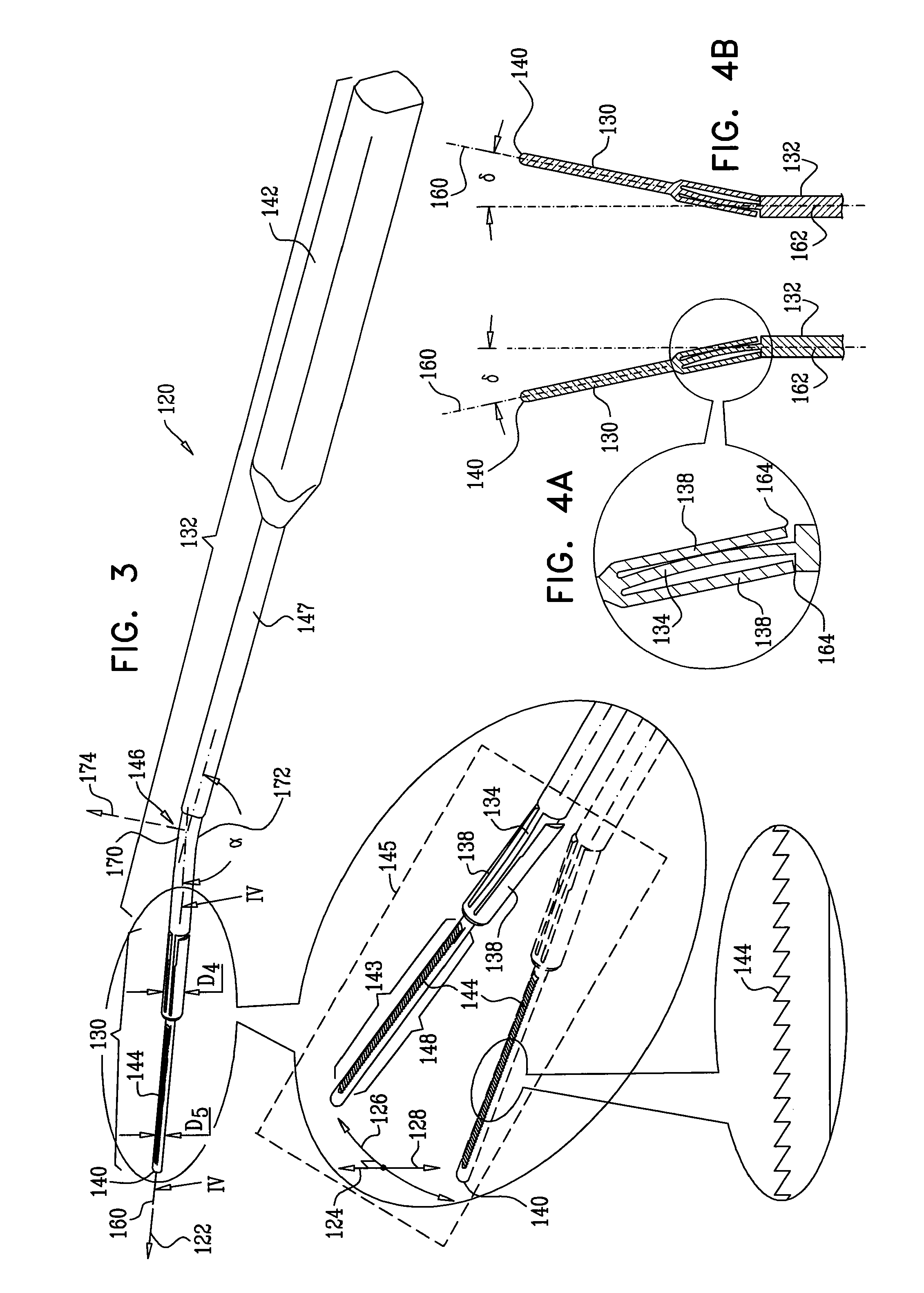Flexible tools for preparing bony canals
a flexible, bony canal technology, applied in the field of medical procedures and tools, can solve the problems of force damage to the anterior, left, and right walls of the canal, and achieve the effect of avoiding the damage of the anterior, left, and right walls
- Summary
- Abstract
- Description
- Claims
- Application Information
AI Technical Summary
Benefits of technology
Problems solved by technology
Method used
Image
Examples
Embodiment Construction
[0258]FIG. 1 is a schematic illustration of a forward tool 20 for preparing a bony canal, in accordance with an embodiment of the present invention. Forward tool 20 is configured to open a passage through the canal by applying a forward longitudinal force, schematically indicated by an arrow 22, substantially without applying forces to the walls of the canal in directions perpendicular to a central longitudinal rod axis 60 of distal rod 30. These directions are schematically indicated by arrows 24 in FIG. 1. The tool opens the passage through soft tissue within the canal, and / or between anatomical features of the canal, such as between soft tissue and the osseous wall of the canal.
[0259]Forward tool 20 comprises a distal rod 30, a proximal shaft 32, and a resisting element 34. Distal rod 30 is shaped so as to define a blunt distal tip 40 that opens the passage through the canal as the tip is advanced distally through the canal and applies a forward longitudinal force. For some appli...
PUM
 Login to View More
Login to View More Abstract
Description
Claims
Application Information
 Login to View More
Login to View More - R&D
- Intellectual Property
- Life Sciences
- Materials
- Tech Scout
- Unparalleled Data Quality
- Higher Quality Content
- 60% Fewer Hallucinations
Browse by: Latest US Patents, China's latest patents, Technical Efficacy Thesaurus, Application Domain, Technology Topic, Popular Technical Reports.
© 2025 PatSnap. All rights reserved.Legal|Privacy policy|Modern Slavery Act Transparency Statement|Sitemap|About US| Contact US: help@patsnap.com



